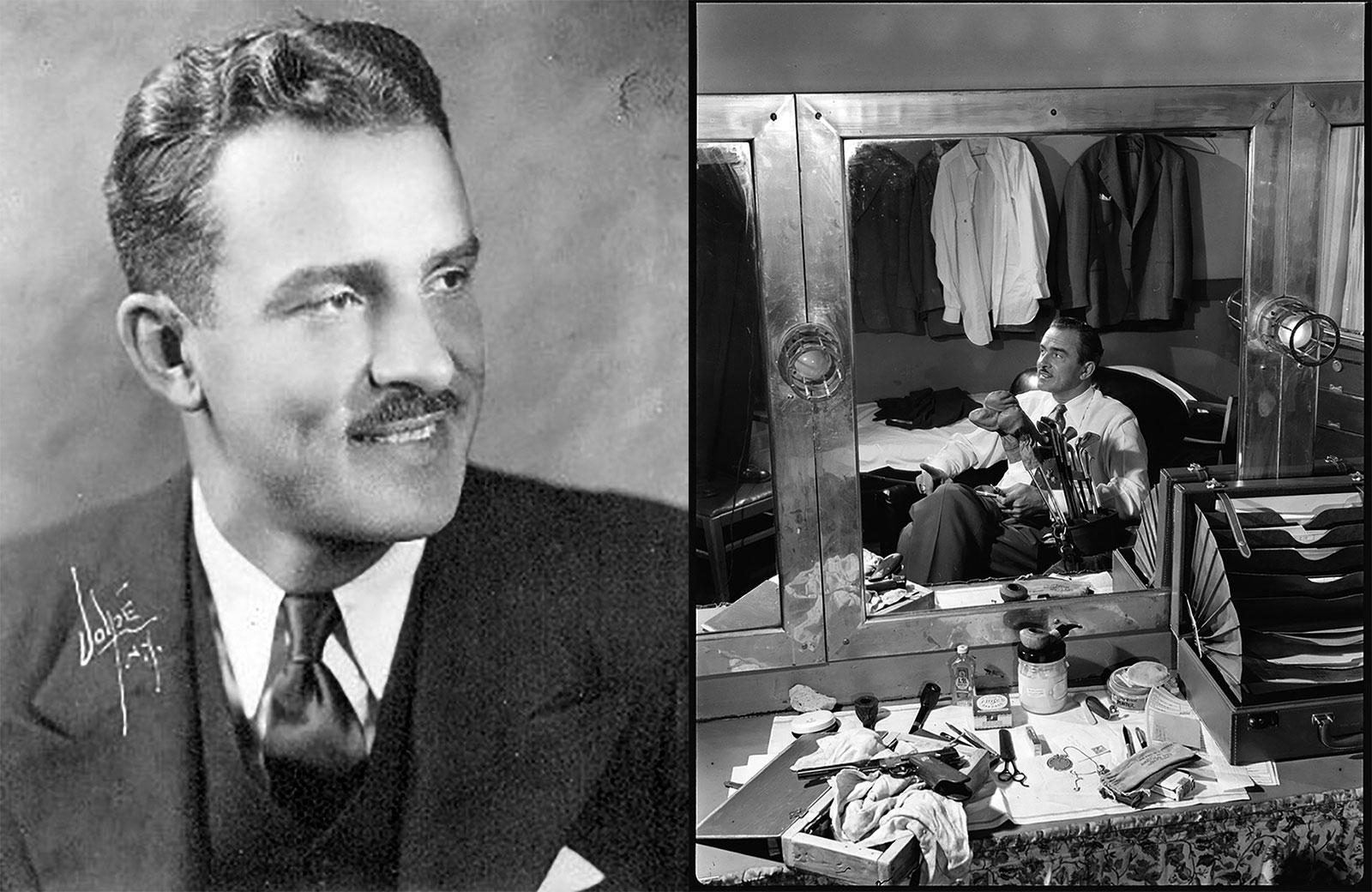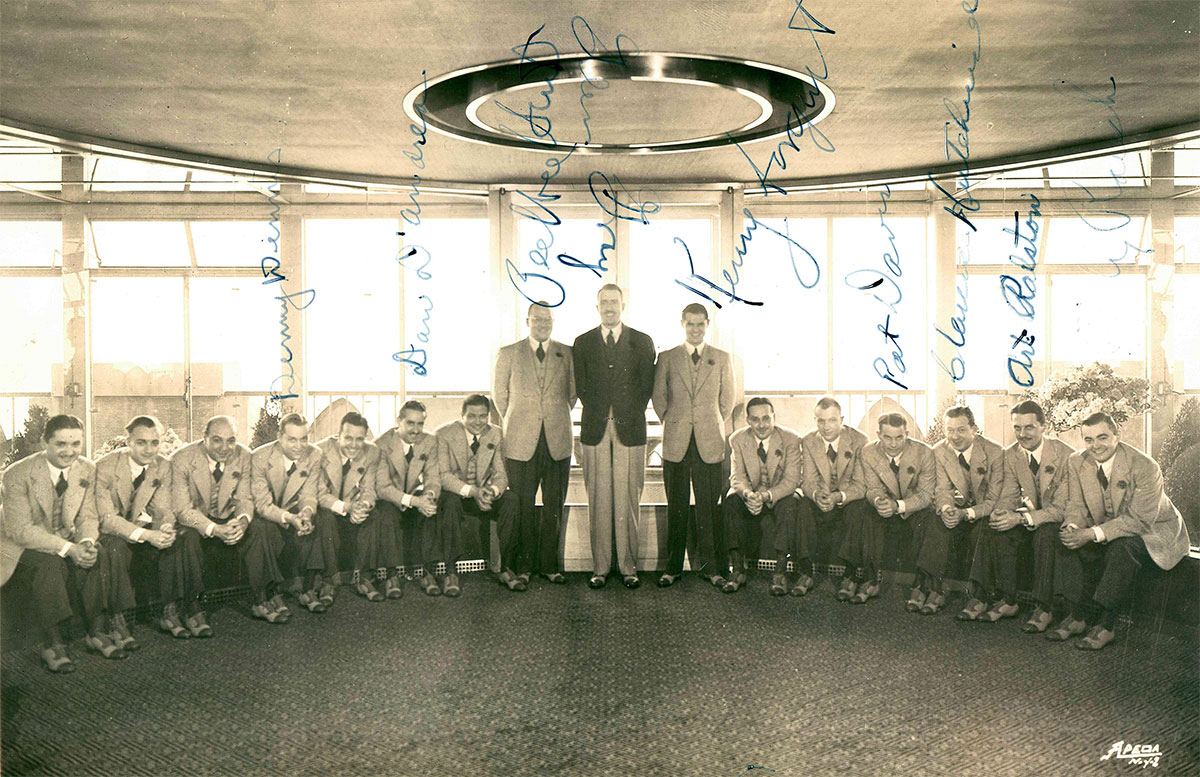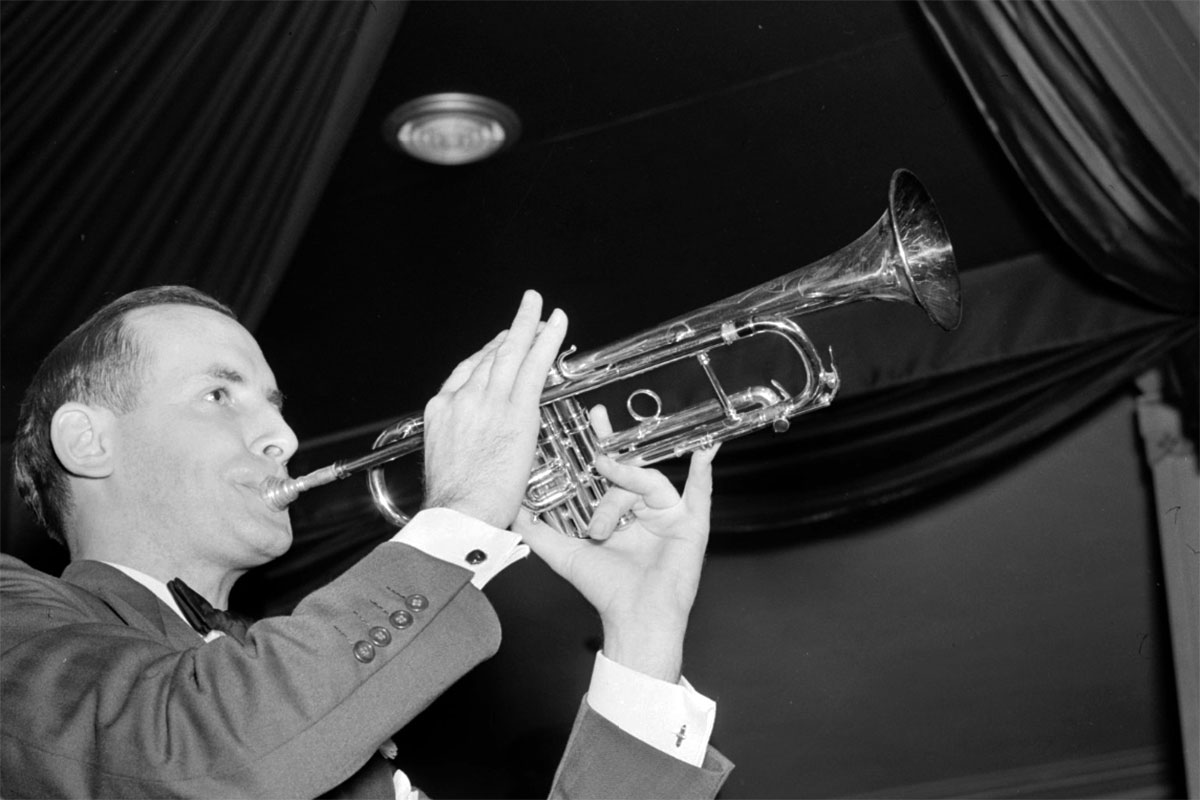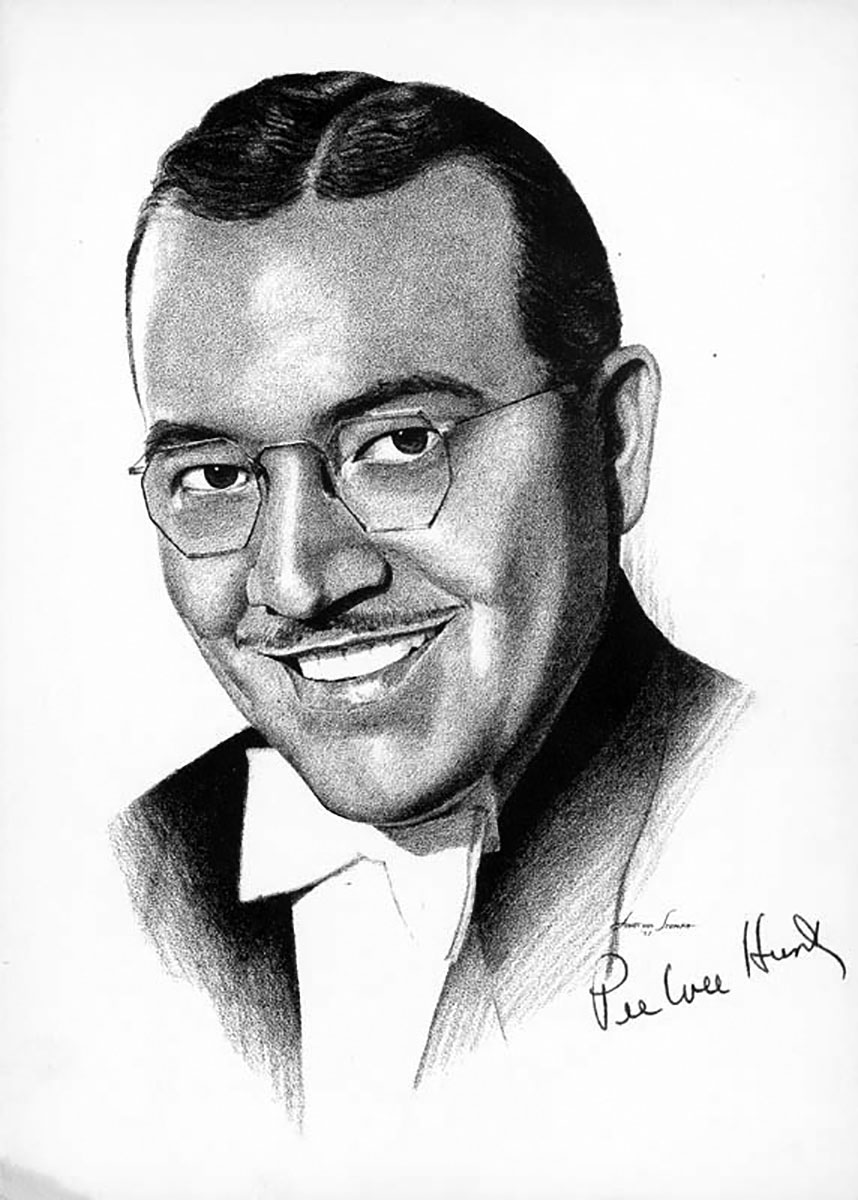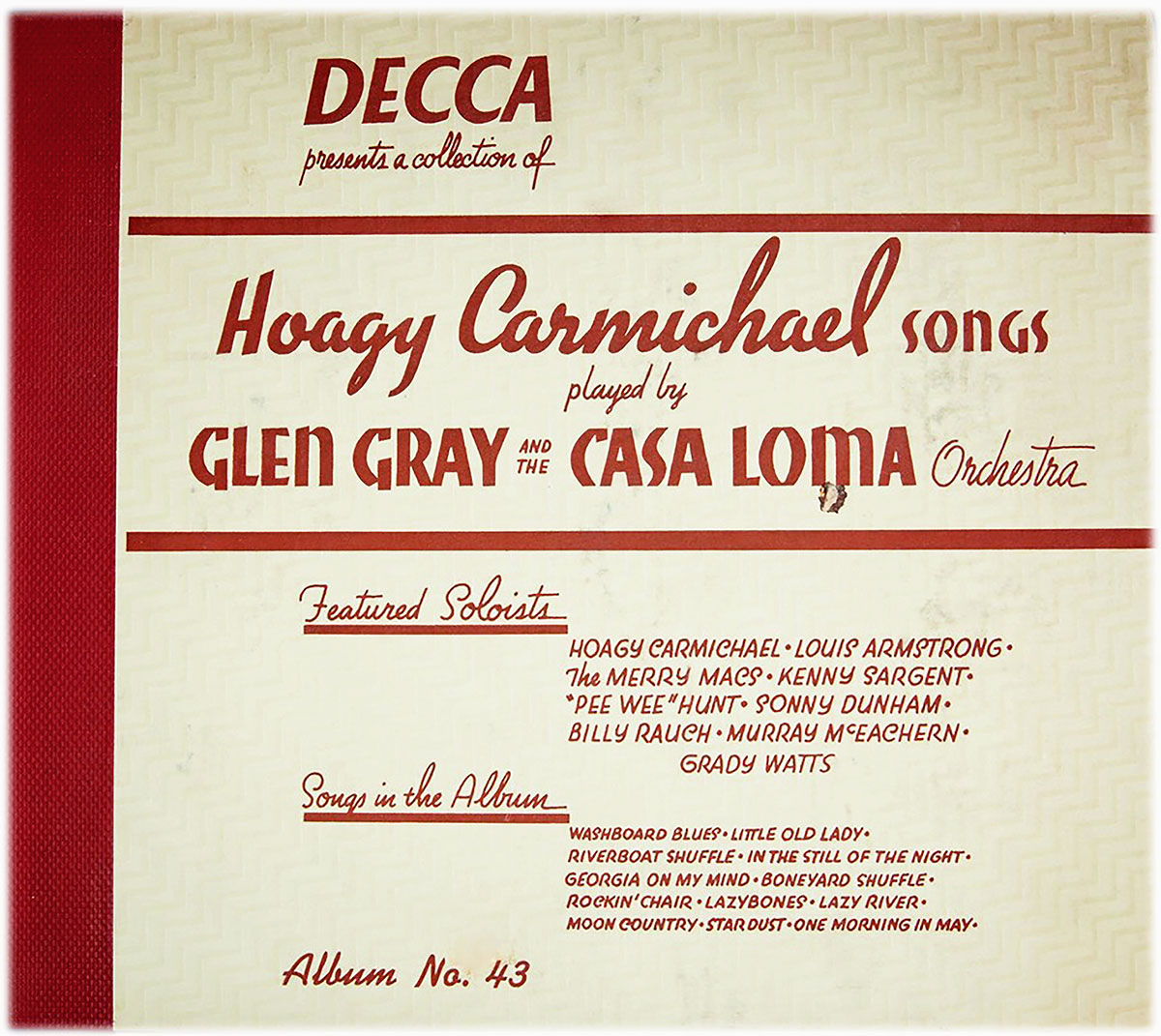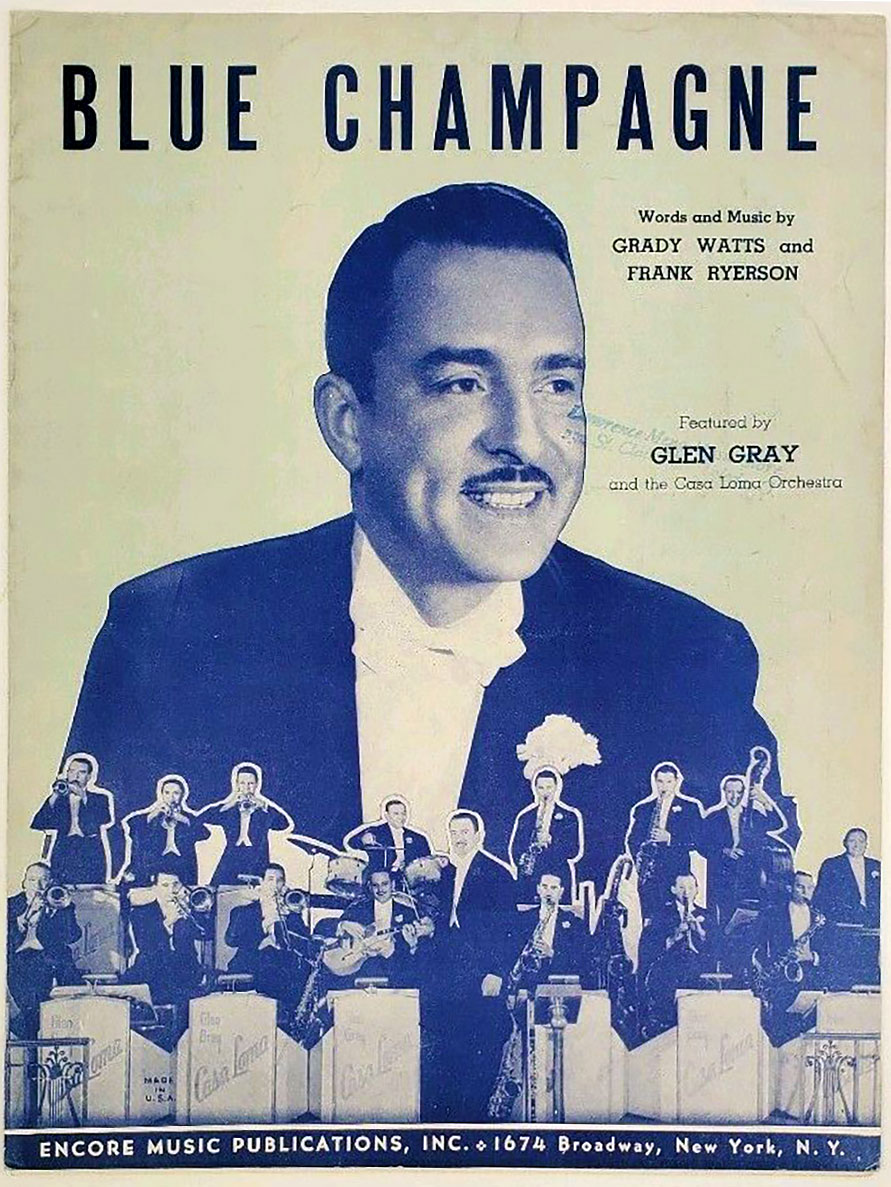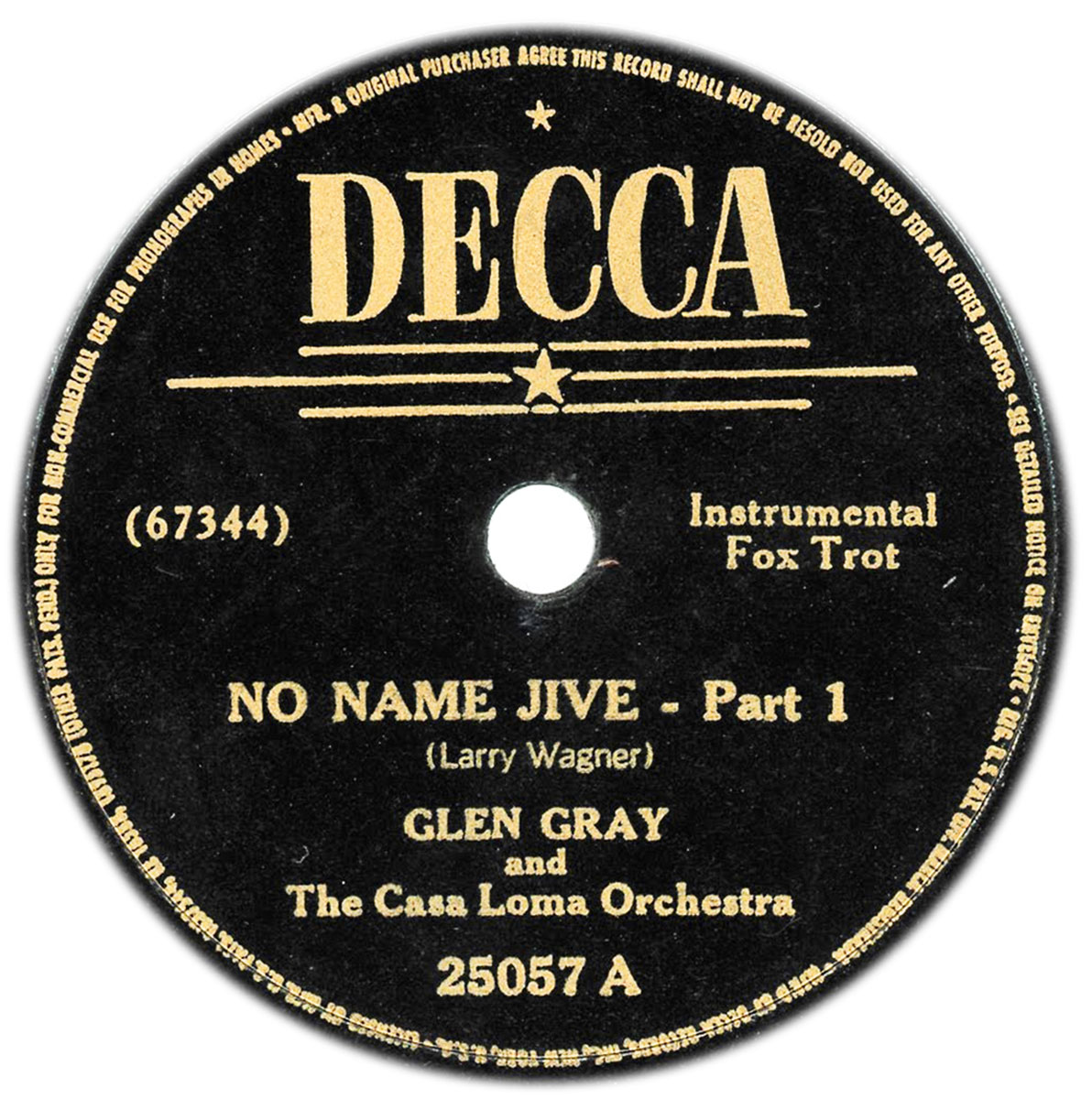Glen Gray
Glen Gray (Knoblauch)(1906-1963) played first alto saxophone, directed the band and had a good head for business. Smart and personable, the 6’ 5” Grey had worked in or managed precursor Goldkette bands. A stabilizing influence known to his fellow musicians as “Spike,” he was elected in 1933 to manage and front the band. It was run thereafter as a more conventional business known as Glen Gray and the Casa Loma Orchestra.
Knoblauch (the German word for garlic) has sometimes been incorrectly characterized as a merely ceremonial conductor and front man. This was not the case. Gray was a skilled and knowledgeable musician, according to arranger Spud Murphy in a 2003 interview.
In later years, all the previous Casa Lomans spoke with respect and fondness of their former leader and namesake. It should be noted that Glen Gray lent the Casa Loma name to numerous Hi-Fi recordings in the 1950s which had no relation to the orchestra of the 1930s yet were very good technically and musically.
Glen Gray, Truckin, Weary Blues
Gene Gifford and the Arrangers
The Casa Loma Orchestra swung with a terrific drive and precision. Their notably different sound and distinctive style came from the arranging of Gene Gifford and his talented successors. It’s not fully appreciated just how critical and integral these arrangers were to the success of the great Swing bands.
A guitar player and banjo virtuoso before 1933, Gene Gifford (1908-1970) became one of the finest arrangers of his day. Originally from Memphis, he started his own band in high school and was in the precursor band to Casa Loma, The Orange Blossoms.
Gifford composed and arranged distinctive music and motifs custom tailored for musicians who delivered with spirit and brio. He was among the coterie of talented arrangers who mastered and excelled in solving the delicately interlocking tasks of organizing and focusing ten or more instruments in a Swing orchestra. And besides writing innovative hot music, the arranger created sumptuous original tone paintings for the orchestra, as they introduced audiences to more complex popular music.
In Lost Chords, Richard Sudhalter asserts that Gifford “developed a concept of ensemble writing almost mathematical in its order and balance. . . antiphonal blocs fused through call-and-response patterns into an ensemble sound.” Yet his charts differed markedly from his contemporaries such as Fletcher Henderson, Don Redman or Bill Challis.
White Jazz – 1931
Black Jazz – 1931
Blue Jazz – 1932
Gifford’s distinctive writing for brass and reeds made the orchestral sections sound almost like a dialog between soloists. His arrangements were quite popular and stock editions circulated widely. However, the downside of Gifford, as noted by Dan Morgenstern in The New Grove Dictionary of Jazz, was that the writing could sound “somewhat repetitious and rhythmically stiff,” though it was “expertly crafted and executed with discipline and precision due, in part, to the stability of the band’s personnel.”
Curiously, Gifford’s protracted disengagement from the orchestra took place between 1934 and ‘39. His brilliant successors – Spud Murphy, Larry Clinton, Larry Wagner and others — proceeded in a similar spirit. Though it should be said that over time, Casa Loma eventually came to sound not dissimilar from its competitors.
Larry Clinton
Larry Clinton (1909-1985) was a trumpeter, songwriter, arranger and protégé of Tommy Dorsey who was brought into the orchestra during 1936-37. A very talented guy, Clinton had done stints with composer Ferde Grofe, pianist and bandleader Claude Hopkins and the Dorsey Brothers, going on to write for Louis Armstrong, Bunny Berigan and Casa Loma.
But Clinton, too, soon left to form his own successful big band, becoming known for his Swing orchestrations of Debussy and Tchaikovsky. Clinton composed and arranged several Casa Loma hits like “Whoa Babe,”sung by trombone player Pee Wee Hunt in 1937.
Larry Clinton, Whoa Babe
Pee Wee Hunt
The signature singing and trombone licks of Pee Wee Hunt (1907-1979) were integral to the Casa Loma sound. He modeled his singing on Jack Teagarden and to some extent his trombone style – meaning that he sounded like a black musician. His audacious solos delivered a rolling, rhythmic drive to the orchestra with gusto and robust tone.
Hunt worked in Goldkette bands 1927-29, becoming a founding member who remained until May 1943. Pee Wee ran his own sextet after World War Two and had a big hit with a comically-Dixieland rendition of “Twelfth Street Rag.”
The Lady from St. Paul – Pee Wee Hunt, 1932
Casa Loma’s Singers
Casa Loma Orchestra enjoyed widespread success, obliging it to present singers. Which in the early days were usually guys in the band. Trombone player Pee Wee Hunt was popular and alto saxophonist Kenny Sargent sang romantic baritone– very popular with the ladies.
Starting in the mid-1930s,they were often joined on records and radio by high-profile celebrity singers: Connee Boswell, Lee Wiley, Mildred Bailey, composer Hoagy Carmichael and superstar Louis Armstrong. Part of a Hoagy Carmichael project, their interpretation set the mold for “Rockin’ Chair.” Sung by Satchmo with Pee Wee Hunt, Pee Wee was premiering the part soon taken by Teagarden with Armstrong.
A Hundred Years from Today – Lee Wiley, 1934
Rockin’ Chair – Louis Armstrong and Pee Wee Hunt, 1939
The Hoagy Carmichael Album
Composer, piano player, singer and actor, Hoagy Carmichael was signed to Decca Records. Casa Loma had already waxed a few of his tunes, and Decca invited them to record a collection of Carmichael songs in 1939.
The resulting multi-disc 78-rpm “record album” produced some fine music, though it was only a middling success. Their worthy rendition of “Georgia” featured excellent trumpeter Sonny Dunham (clearly, a follower of Bunny Berigan) and Murray McEachern, alto saxophone.
Hoagy Carmichael, Georgia on my Mind, Boneyard Shuffle, Riverboat Shuffle
A Vanguard of Swing
The greatness of Casa Loma Orchestra lay in several distinctive characteristics. The arranging techniques of Gene Gifford and his successors offered a unique solution to the new and daunting task of building a Swing ensemble from a dozen or more instruments. The collective structure of the early years empowered its members, solidifying an extraordinary cohesion and esprit de corp. Their polished and varied presentation of hot dance music, popular tunes and dreamy mood music lent them a broad appeal in performance, on radio, records and sheet music.
Casa Loma Orchestra blazed a pioneering path that shaped the early Swing era. Contemporary observers suggested that Casa Loma’s recordings failed to capture the dynamism, rich layering of sound and excitement of their live shows. Eclipsed by Benny Goodman after 1936, they nevertheless adapted to the shifting winds of style for another decade.
A singular entity with a key role in the emergence of Swing Jazz and Big Band music, it was an innovative White jazz orchestra– one of the few feared and admired by its Harlem colleagues and competitors. A vanguard of the Swing era, Casa Loma set the highest standards for music presentation on a broad spectrum from sweet ballads to Swing jazz.
No Name Jive, Pts. 1 & 2 1940
Sources and Further Reading:
Author interview with Spud Murphy, Los Angeles, 2003
Jazz Records: 1897-1942 [discography], Brian Rust (Arlington House, 1978)
Lost Chords: White Musicians and Their Contribution to Jazz 1915-1945, Richard Sudhalter (Oxford University Press, 1999)
The New Grove Dictionary of Jazz (St. Martin’s Press, 1988)
- ← Previous page
- (Page 2 of 2)

